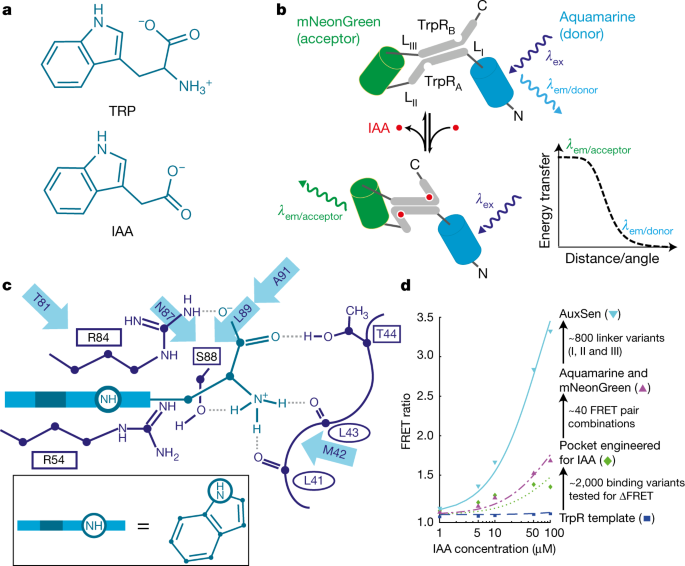There is a protein in bacteria called a “tryptophan repressor”. This protein can change its conformation when it binds to tryptophan. Tryptophan is structurally similar to auxin, which is a very important plant hormone.
The researchers engineered a modified the tryptophan receptor that will bind reversibly auxin instead of tryptophan. They also engineered it such that it will produce a specific type of fluorescence only when auxin is bound to the protein. This is done by using this shape-changing protein as a bridge between two different fluorescent proteins, one which acts as a donor and the other as an acceptor. Energy transfer from the donor to the receptor can only occur when the protein bridge is in the conformation elicited by auxin binding. The end result is a protein which, when excited with light, will produce a different light output depending on the local concentration of auxin.
By adding this new gene to a plant one is able to visualize the concentration of auxin directly using a microscope.

